Naked and Afraid Art Museums Are Having Their Own Postmetoo Reckoning
A Racial Reckoning for Fine art Museums
22 June 2021
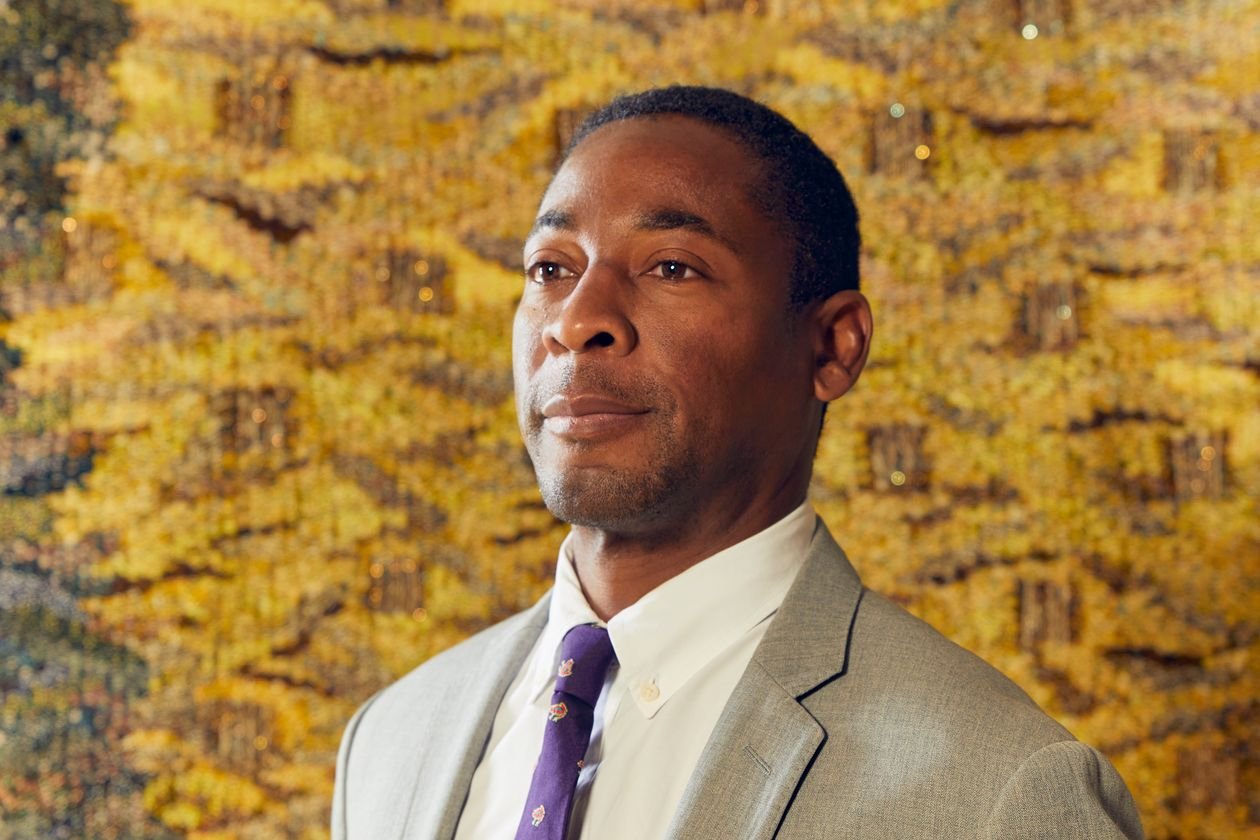
Written by Abby Schultz and Mitch Moxley, and published originally by Penta magazine, June 21, 2021.
As art museums put the pandemic backside them and reopen their doors to the public, many wonder if they volition offer a more inclusive environment to staff and visitors than in the by.
Museums had a wake-upwards phone call among the social justice protests that rocked the U.S. after the May 2020 murder of George Floyd in Minneapolis. Storied institutions—such as the Philadelphia Museum of Fine art, the Solomon R. Guggenheim Museum, and the San Francisco Museum of Art—were chastised for alleged racist environments, and responded to varying degrees with pledges and initiatives to do better.
It'south non the first time museums accept been down this path. In 1969, an organization of Blackness artists called the Black Emergency Cultural Coalition charged that a Metropolitan Museum of Art exhibition called "Harlem on My Heed: the Cultural Capital of Black America" failed to include the work of any Blackness artists, according to the Met.
Then in 1971, 15 Black artists backed out of an exhibition of "Contemporary Black Artists in America" at the Whitney Museum in Manhattan, charging the museum for failing to include Blackness art specialists in the curation of the exhibition.
The coalition, which called for a boycott of the Whitney show, "was an system that put pressure level on museums to make systemic changes, and the museums, at the time, didn't," says Marshall Price, master curator at the Nasher Museum of Art at Duke University.
It's not that there haven't been efforts to create change. In 2016, the American Alliance of Museums' (AAM) strategic program included diversity, equity, access, and inclusion (DEAI) as "ane of the top iii things vital to museums' viability, relevance, sustainability—to their overall success," says Laura Lott, CEO of the brotherhood, which represents all types of museums. In 2018, recognizing that nearly half of all museum boards were 100% white, AAM began a iii-year endeavor titled "Facing Modify" to advance DEAI at the board level at fifty museums.
Lial Jones, president of the Association of Fine art Museum Directors, says that staffing at about museums doesn't reflect demographic shifts under style in the U.S., with nigh employees of colour working in hourly positions that were hands eliminated or furloughed during pandemic-forced closures.
Even so, Jones says, several institutions today are hiring diversity officers and are fundraising to make sure these positions don't get away in the future and that this work continues long term. "Information technology's not a fad in any style, shape, or form—this is a long-term commitment."
Simply the experience of Kelli Morgan, an contained curator specializing in American Fine art, who resigned from her job as an associate curator at the Indianapolis Museum of Art at Newfields in July 2020 considering of an environment she considered racially toxic, illustrates the barriers arts professionals of color nevertheless confront. "When I came in with my critique of whiteness, [and] de-centering white narratives, and I was interrogating complicating narratives of white patriarchy in early on American Fine art—it freaked everybody out," she says.
Although she received plenty of support from staff, docents, and visitors, when her approach seeped into fundraising, marketing, acquisitions, and elsewhere, it "acquired some very fraught situations between myself and the senior leadership," Morgan recalls. "If you are serious virtually antiracism piece of work, information technology doesn't just begin and stop in the galleries...It's broader than that."
Price at the Nasher Museum considers this moment in history an inflection point similar to the opportunity in the late '60s/early '70s. Although that experience had little impact, "hopefully this will non be one of these moments," he says. "Information technology will be a moment when change does happen." —Abby Schultz
Pérez Art Museum Miami: A Renewed Focus on Inclusion
From its earliest days, Pérez Art Museum Miami's mission has been to bring together the various city it inhabits. Originally launched as a space for temporary exhibitions, PAMM became a collecting institution in 1994, focused on 20th- and 21st-century international art, targeting a diverse selection of artists.
"The way that we talk about our museum now is to be a museum of modern and contemporary art, only 1 that is the best at reflecting that of Latin America and the Caribbean area, which is where we are, and we wait toward the African diaspora to the U.Southward. Latino experience with that," says Franklin Sirmans, PAMM'south managing director since 2015.
In 2004, the museum moved into a $220 1000000, Herzog & de Meuron-designed building overlooking Biscayne Bay. Over the years it acquired works by artists including Romare Bearden, José Bedia, and Carrie Mae Weems, and too became an arts educator for more than 20,000 schoolchildren, many of them from families of immigrants.
PAMM'south commitment to diversity stretches to its staffing likewise: According to a 2018 New York Times survey, Pérez had the highest percentage of full-time curators who identified every bit people of colour, at 50%.
So when racial justice protests broke out final summer, they served to reaffirm PAMM's commitment to diversity, something reflected in the exhibitions already in the works. Those included "Centrolineal with Power," which premiered in Nov 2020 and features pieces from beyond the African diaspora in PAMM's permanent collection. That was followed by "MY Body, MY RULES," showcasing work exclusively from women artists, exploring how gender is portrayed in mainstream society.
"We believe museums are placesfor difficult conversations," Sirmans says, [and] we want to be that place, where people can meet each other in a more whole calorie-free." —Mitch Moxley
Hirshhorn Museum And Sculpture Garden: A Continuum Of Multifariousness
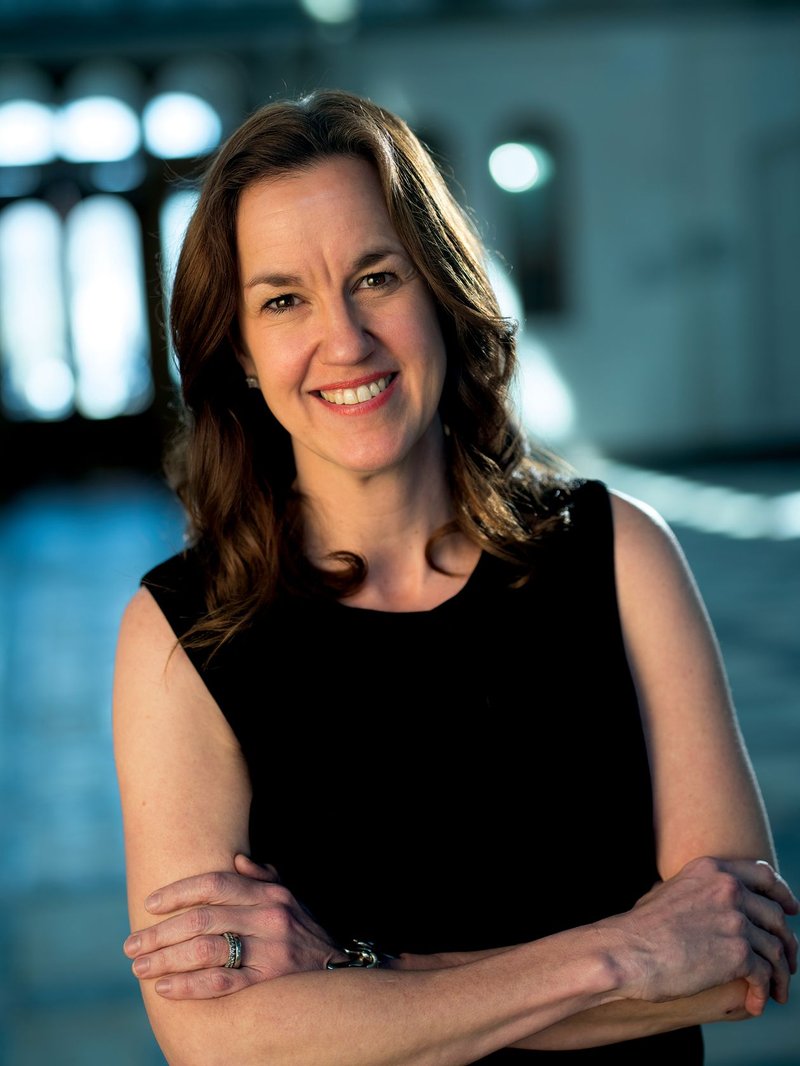
Evelyn Hankins, senior curator at the Hirshhorn Museum and Sculpture Garden in Washington, D.C., is working with artist Sam Gilliam on a retrospective survey of his more than six decades breaking boundaries in painting tentatively gear up for leap 2022.
Perhaps best known for his paint-splashed Drapery canvases that "freed painting from the stretcher bars," beginning in the 1960s, Gilliam, 87, is a multifaceted abstract artist considered "1 of the most important innovators of postwar painting," Hankins says.
That he's a Black person is a reality Gilliam doesn't bring directly into his art, even as he was criticized by the Black power and arts movements in the 1960s and early 1970s for his "nonrepresentational art"—works viewed as "out of touch with the lived experiences of Black people in the United States," according to a 2020 paper by Grant Hamming, an American Art Enquiry Fellow at the Cornell Fine Arts Museum at Rollins College, Winter Park, Fla.
Similarly, conceptual artist Charles Gaines was asked by Black artist friends in the 1970s, "why are you making white fine art?" he recalled in a Hirshhorn-sponsored virtual talk in March. Gaines said he didn't consider his art "white," but he realized, some 10 years later on in a response he said "might seem more than similar a justification," that what he was doing was "deconstructing representation." His experiences as a young male child in the Jim Crow South were revealed in his "strategies of making."
The Hirshhorn owns and has exhibited works by several Black artists over many years, including Gilliam, Gaines, art-and-sound artist Jennie C. Jones, and Los Angeles creative person Mark Bradford, who created a commissioned suite of site-specific works for the Hirshhorn in 2017 called Pickett'southward Charge. Last June, the Hirshhorn spearheaded an endeavor by 13 museums worldwide to show Arthur Jafa'south 2016 video exposing the pervasiveness of systemic racism, Dear is the Message, The Message is Death, for 48 hours on their websites.
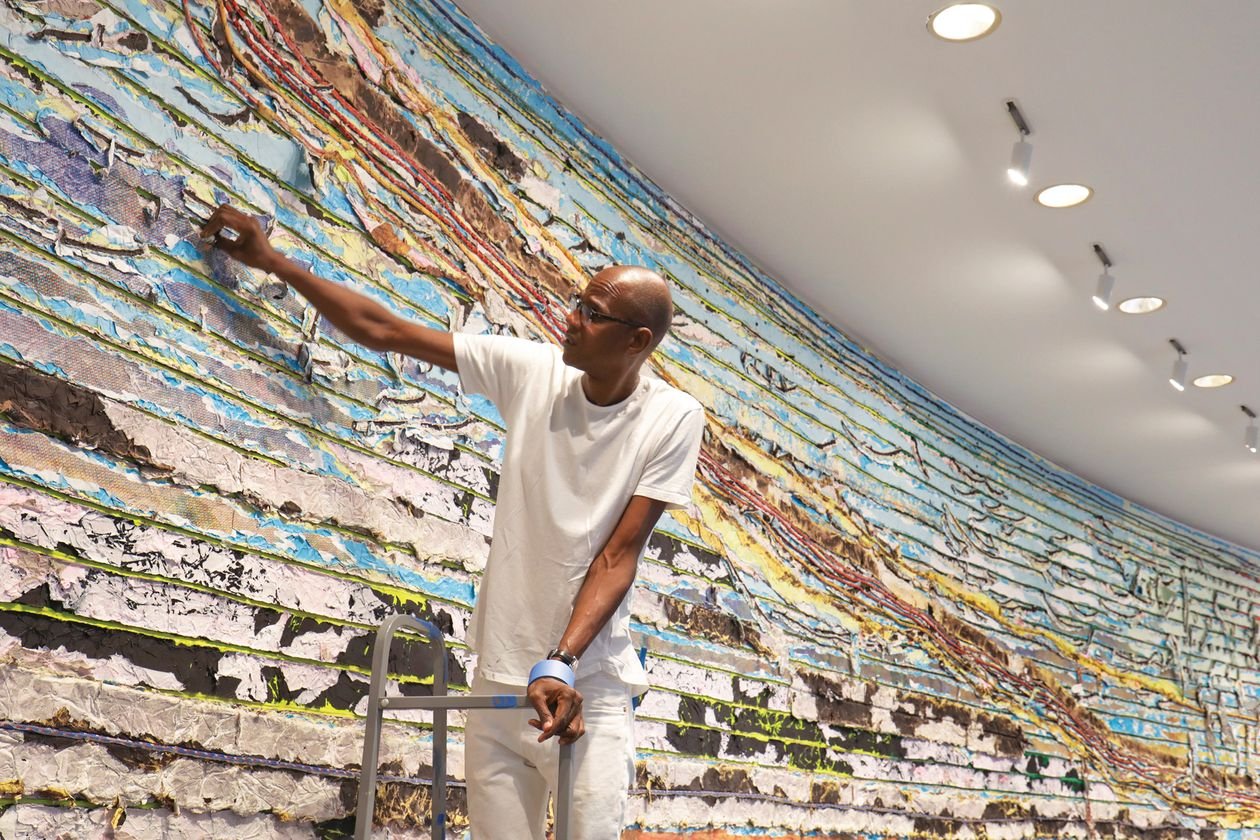
There's no through-line connecting these artists. "They are merely making the art I find incredibly interesting for dissimilar reasons," Hankins says.
Yet Hankins believes that increasing diversity in museum collections, in exhibitions, and in staffing are "all rightfully tiptop priorities of museums—we have, for as well long, had a narrower focus than we should have."
As a curator—and a white woman—Hankins says she sees a responsibility each time she proposes a piece of work of art for acquisition, or proposes an artist to work with on an exhibition project, to consider what'southward needed at the museum to redefine the canon of art history.
"Information technology's a question of not but trying to understand who was left out, [but to] understand what kind of questions were being asked that led them to be left out," Hankins says. —Abby Schultz
Solomon R. Guggenheim Museum: Redressing Viewpoints
The Solomon R. Guggenheim Museum and Foundation opened "Re-Projections: Video, Pic, and Performance for the Rotunda" in March—a series of four exhibitions in the museum's expansive heart that reply to the swirling narratives of the past year, from the pandemic to political polarization to racial unrest and protests.
Throughout its nearly half-dozen-calendar month installation, the artists—grounded in multiple perspectives and cultures—will projection "works and images of people who wouldn't take been seen on that scale, and certainly non in the rotunda," says Richard Armstrong, the Guggenheim'south manager.
Rwandan-born Dutch artist, filmmaker, and writer Christian Nyampeta's 2018 movie Sometimes Information technology Was Cute, wrestling with themes of colonialism, is the second in the series and volition be up through June 21.
Also on view through September is "Off the Record," the inaugural show of Ashley James, the museum's showtime Black curator. The display of several largely Guggenheim-owned works past 13 contemporary artists—including Glenn Ligon, Lorna Simpson, Hank Willis Thomas, and Carrie Mae Weems—"looks at how so-called authoritative data and tape-keeping sometimes works against certain kinds of people," Armstrong says. "It should exist a fleck of a landmark in the museum'due south evolution."
The exhibitions are among the museum's initial efforts to comport through on a DEAI plan approved by its board of trustees in August 2020. "We decided to analyze both exhibitions and acquisitions over a long flow of time, and redress what might be seen as a prejudice against or in favor of one point of view," Armstrong says.
The DEAI plan was revealed after invitee curator, Chaédria LaBouvier, chosen out the museum's leadership in the autumn of 2019 for what she described as pervasive racism. A three-month independent investigation by a New York police force business firm reported "no evidence" that LaBouvier, who is Black, "was subject field to agin treatment on the ground of her race" but the museum's board of trustees recognized urgent change was needed in "staff, programming, and outreach."
The plan—which includes creating a more inclusive environment for staff and greater multifariousness amongst the board of trustees—assumes "we have to act on every single signal and information technology has to become ingrained in people equally an ethical position," Armstrong says. "We've had success at that."
One direct response was the appointment of Naomi Beckwith equally deputy manager and chief curator. Formerly senior curator at the Museum of Contemporary Art, Chicago, Beckwith has a history of curating exhibitions focused on identity and multidisciplinary gimmicky practices.
"She'll take a perspective that might accept been missing," Armstrong says. Forth with James—who provides her own perspective through traditional contemporary media— "they will assist u.s. to see things differently." —Abby Schultz
Speed Art Museum: A Mission to Reflect a Community
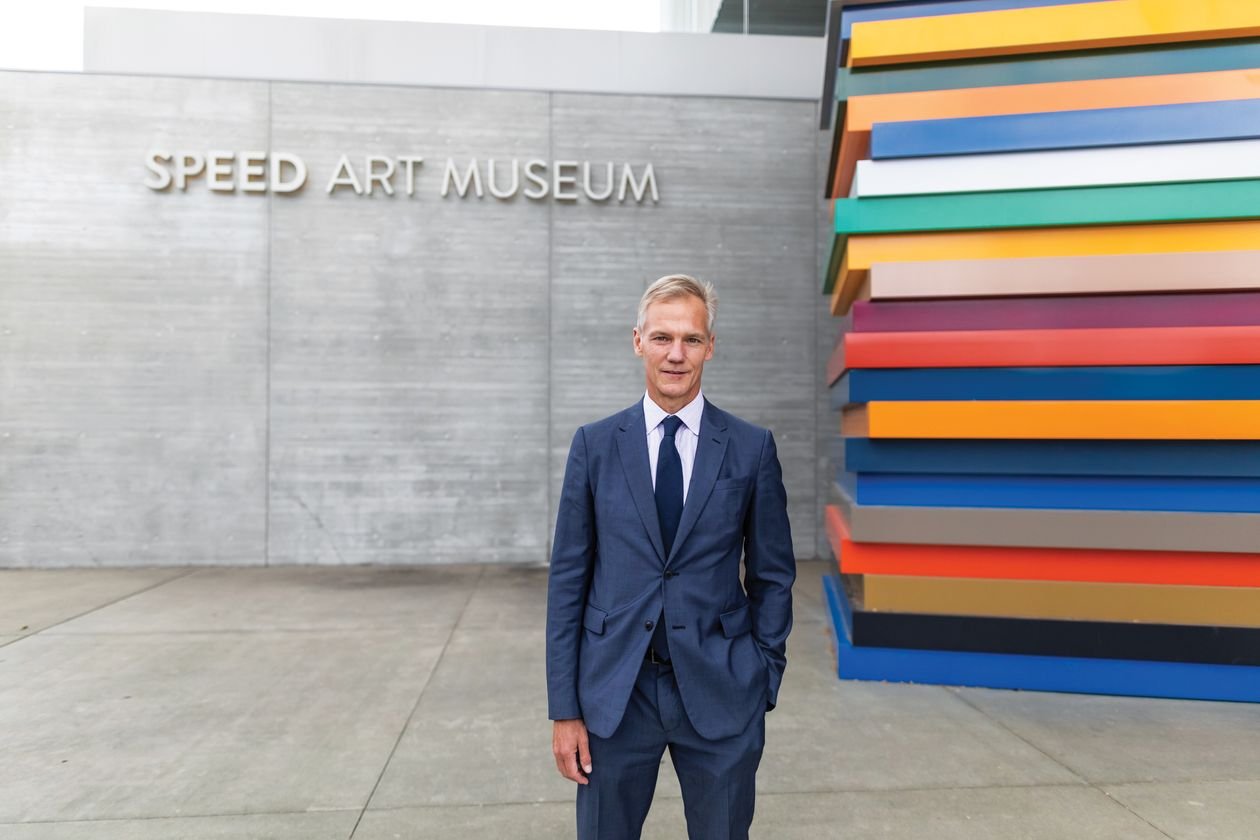
In the months after Breonna Taylor, a Black 26-year-quondam medical worker, was killed by police in her home in March 2020, Louisville, Ky., was a shaken urban center. Speed Art Museum, known locally as the Speed, the oldest and largest fine art museum in the state, knew it needed to respond in a fashion that addressed the pain and turmoil afflicting the city.
"The killing of Breonna Taylor and the protest that followed...caused us immediately to exercise what pretty much all museums were doing, simply doing it with a special focus on our city," says Stephen Reily, director of the Speed. That focus meant "defining and expressing our commitments to reflect and stand for our city in all areas of our work.
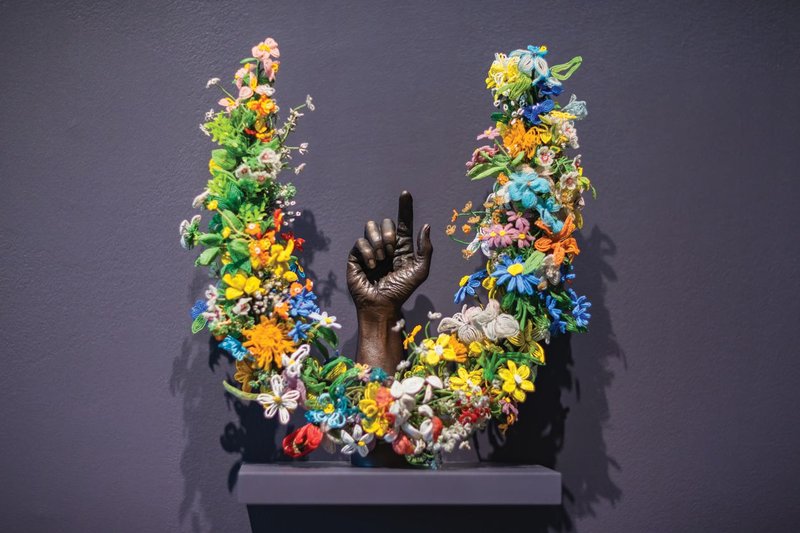
In June 2020, the Speed committed to issuing a racial equity report by the end of the summertime. The study, published concluding August, found that while "we have accelerated the pace of change since the renovated Speed reopened in 2016, we should have started doing so sooner, and now is a time to move even faster." The Speed said in the report that it was committed to increasing the number of Blackness employees, to review salary levels for bias, and to acquire and exhibit works by artists who are Black, indigenous, and people of colour (BIPOC) in a percentage that amend represents the region.
Office of that commitment included the conquering of a portrait of Taylor by the creative person Amy Sherald, which became the centerpiece of an exhibition chosen "Promise, Witness, Remembrance," which opened in Apr. The exhibition was led past curator Allison Glenn, who worked closely with Taylor's family and an advisory committee of artists and activists. It featured works by Blackness artists from the museum'south permanent collection, and loans from artists and galleries, including photographs of street protests in the wake of Taylor's decease.
For Reily, who is leaving the museum when the show ends in June, the exhibit is a sign of things to come. "We're committing to an exhibit and an acquisitions program that really honors Black vision and the Black vocalization." —Mitch Moxley
Nasher Museum of Art at Duke University: Telling Untold Stories
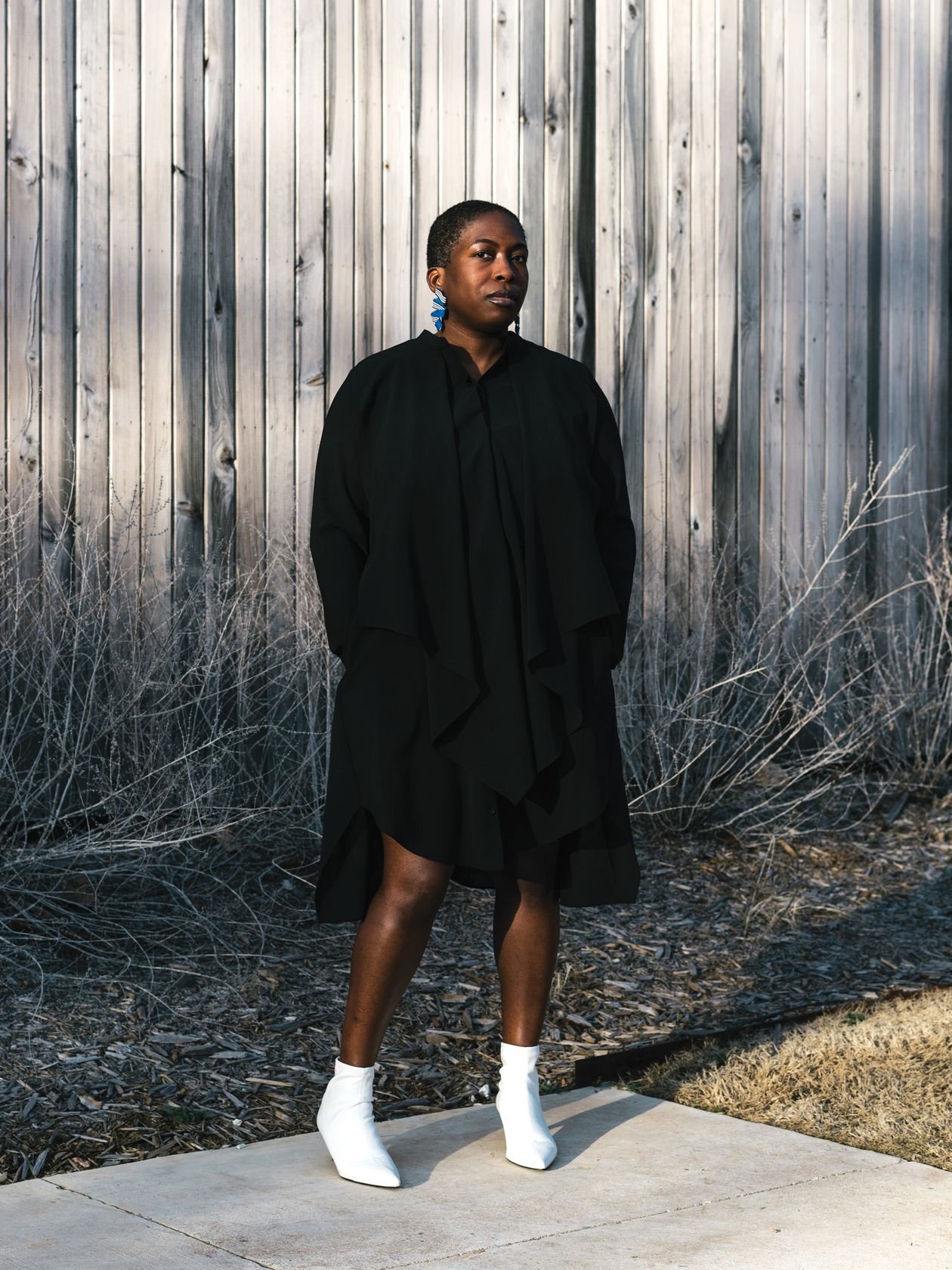
Lauren Haynes first got to know the Nasher Museum of Fine art at Duke University when curator Trevor Schoonmaker brought his influential exhibition " Barkley L. Hendricks : Nascency of the Cool" to the Studio Museum in Harlem in 2008, where she was a curatorial assistant.This month Haynes joins the museum—where Schoonmaker is now director—as the Patsy R. and Raymond D. Nasher Senior Curator of Gimmicky Art.
The move reflects Haynes' attraction to institutions with university connections and the resources and scholarship that allows. The Nasher is especially appealing because the museum demonstrates its commitment to "telling these stories that oasis't been told," she says.
Part of the Nasher'southward mission since information technology was recreated in award of Duke alum Raymond D. Nasher in 2005 has been to build a gimmicky art collection that embraces diverseness, particularly in its inclusion of artists of African descent. It doesn't practise this to become accolades, Haynes says, but because "it'due south important to teach students this and allow them to have these works and these collections."
Haynes comes to the Nasher from the Crystal Bridges Museum of American Fine art in Bentonville, Ark., where she was curator of gimmicky art since 2016, and, for the past yr, curator of visual arts at the Momentary, a downtown Bentonville satellite of Crystal Bridges aimed at allowing everyday access to visual, performing, and culinary arts.
At Crystal Bridges, Haynes added artworks past Sam Gilliam, Jordan Casteel, Titus Kaphar, and Amy Sherald, among others, to the drove, "to tell more than complete stories of American art," she says. She also oversaw the seminal "Soul of Nation: Art in the Age of Black Power" show that originated at the Tate in London and get-go came to the U.S. via Crystal Bridges in 2018.
Marshall Price, Nasher's principal curator, says the museum was drawn to Haynes' interdisciplinary approach, which was evident in her curation of "Speaking of People: Ebony, Jet and Contemporary Fine art," a 2014-15 Studio Museum exhibition. "I was impressed with the style she wove together the narrative of contemporary fine art and these 2 Black publications in a much bigger-motion-picture show sense near American culture and Black culture," Toll says.
The Nasher has begun to re-examine works from its legacy collections—works of pre-Columbian art, traditional African art, and pockets of medieval fine art—with a critical eye. In January, the Nasher expects to launch a testify featuring North Carolina-based contemporary artists of local, regional, and national renown. The idea for the exhibition preceded the protests of last year, but, Price says, what transpired then "helped us to galvanize but how crucial it is to engage with artists in our own backyard." —Abby Schultz
Detroit Plant of Arts: Building a More Inviting Museum
In 2015, the Detroit Constitute of Arts, home to one of the largest collections of art in the country, began a museum- wide initiative aimed at diversifying the board of directors, acquiring fine art by Black artists, and creating paid internships to expand access to the museum industry. It was an of import stride for an institution in the eye of a city that is 80% Blackness, and function of an ongoing mission to meliorate represent the city.
"As our nation's attention has been fatigued to inequity and systemic racism over the past year, it is critical that the work nosotros had started a few years ago moves frontward with additional urgency," says Judy Dolkart, DIA's deputy managing director. "The next step for real growth and change is to utilise and permeate this internal learning throughout our governance, programming, exhibitions, and overall visitor feel."
The DIA's diversity initiatives are broad ranging. In 2000, it became the offset museum in the U.S. to establish galleries and a curatorial department devoted to African-American fine art. Today, information technology welcomes thousands of schoolchildren each year from the region, and offers professional development opportunities for the area's teachers.
Information technology as well partners with a number of organizations in the community, including the Charles H. Wright Museum of African American History, for exhibitions and programs; the Inside|Out program, which places reproductions of DIA works in the customs; and the Detroit Fine Arts Breakfast Club, a group of artists and collectors, which led to an exhibition of works by Blackness artists collected past Detroiters.
"The DIA takes very seriously its responsibility to its community," Dolkart says. "Nosotros know we tin can do much more than—we see increased omnipresence from Blackness visitors when we have special programs, only nosotros need to make the DIA a welcoming and inviting feel every day." —Mitch Moxley
This article appeared in the June 2021 issue of Penta magazine.
Source: https://cimam.org/news-archive/a-racial-reckoning-for-art-museums/
0 Response to "Naked and Afraid Art Museums Are Having Their Own Postmetoo Reckoning"
Post a Comment